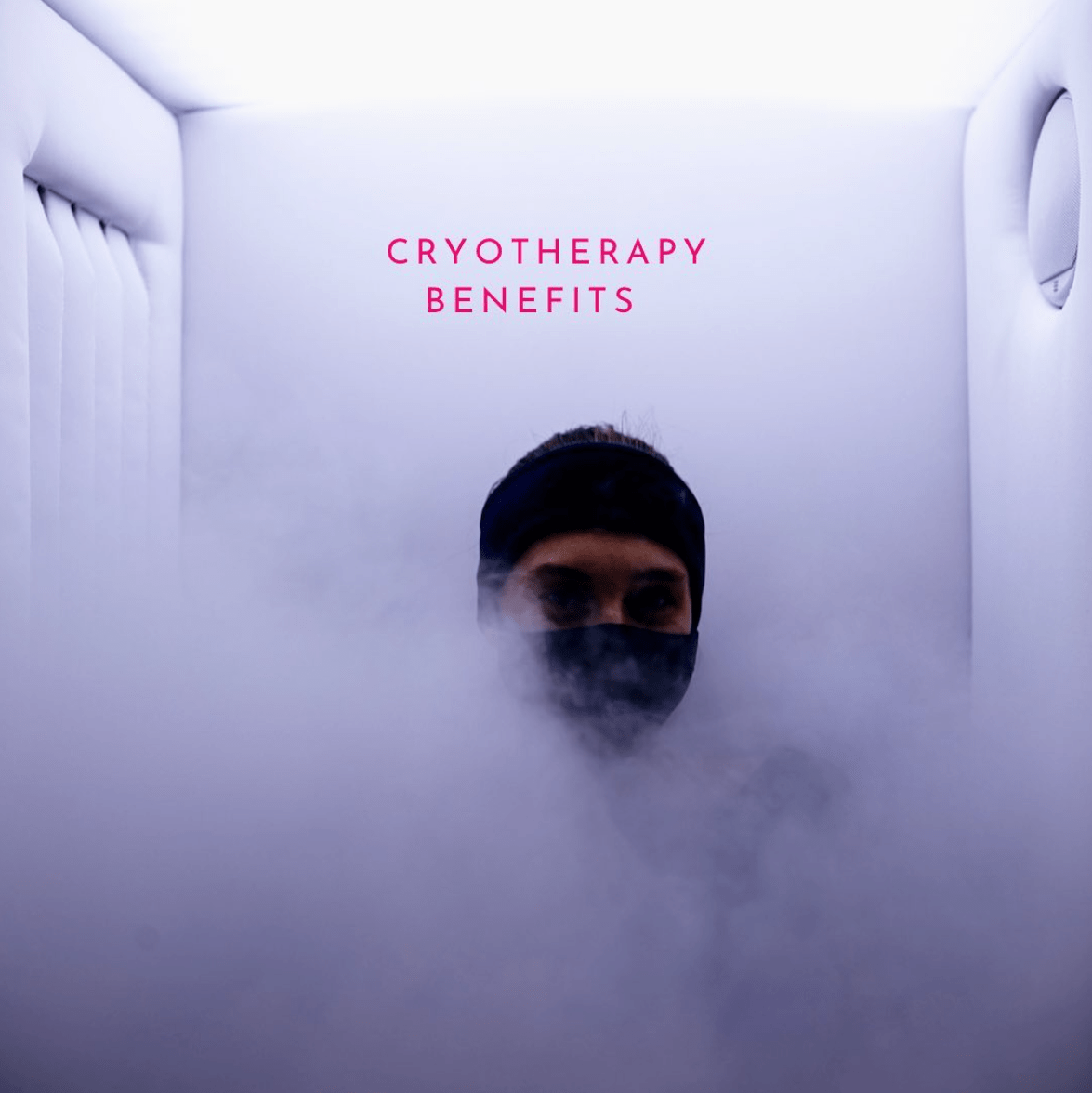What Cryotherapy Benefits Should People Know About?
Cryotherapy is a cryogenic treatment that involves the use of extremely low temperatures to target various medical conditions. While cold therapy has been used to treat a variety of health conditions, only recently have the health benefits of whole body cryotherapy begun to be fully understood.
Some of the most well-known cryotherapy benefits include pain relief, reduced inflammation, and improved circulation. Cryotherapy can also help to speed up the healing process following an injury, as well as reduce the risk of developing certain chronic medical conditions.
Cryotherapy is a great way to improve your body’s health. It can help you with your metabolism, sleep, and reduce stress and anxiety. It can also help relieve joint pain and inflammation.
As more research is conducted on cryotherapy, it is likely that even more health benefits will be discovered. For now, however, cryotherapy remains an effective and safe treatment option for a variety of medical conditions.
If you’re interested in trying a cryotherapy treatment, you can find plenty of wellness centers near you.
 Potential Health Benefits of Cryotherapy
Potential Health Benefits of Cryotherapy
Cryotherapy is a treatment that uses freezing temperatures to reduce core body temperature. The change in tissue temperature acts as a sensory shock, causing an increase in norepinephrine and an increase in blood pressure and heart rate. Extreme temperatures cause blood vessels to constrict and expand, releasing anti-inflammatory proteins into the blood. This treatment is safe, but there are some precautions to be taken.
1. Helps with Pain Management and Muscle Recovery
Cryotherapy is effective in helping reduce inflammation and chronic pain caused by muscle and joint disorders. It can also improve the healing process of athletic injuries. It is commonly used by athletes to reduce soreness after intense exercise. It helps reduce swelling and improves blood circulation in injured muscles. Although the treatment only provides temporary relief, it may be worth a try.
2. Might Help Treat Precancerous Cells
Cryotherapy is also used by medical professionals, such as physicians, in treating people with cancer or arthritis. Although the treatment can be uncomfortable at first, the sensation diminishes after several sessions, and the body adjusts to the low temperature.
The procedure is generally safe, although it should be avoided by pregnant women, children, and people with severe high blood pressure or heart conditions. And it is not advisable to sleep during a session.
3. Helps Reduce Inflammation
Whole body cryotherapy (WBC) is a treatment that involves exposing the body to sub-zero temperatures. The aim is to reduce inflammation and provide other anti-inflammatory effects. Body cryotherapy is often used to treat chronic inflammatory skin conditions such as eczema and psoriasis.
It can also be used to relieve pain and stiffness in joints and muscles. Body cryotherapy is thought to work by causing the body to release endorphins, which are natural pain-relieving chemicals. It may also help to reduce inflammation by reducing the number of immune cells in the body.
Whole body cryotherapy is generally considered safe, but it can cause side effects such as shivering, headaches, and dizziness. These side effects are usually mild and resolve quickly.
4. Helps Manage Mood Disorders
When it comes to mental health, there are a variety of ways to help manage anxiety disorders and other mood disorders. From therapy and medication to natural supplements and lifestyle changes, there are many options available. However, one of the most promising treatments is cryotherapy.
Cryotherapy involves exposure to very cold temperatures, which has been shown to provide a host of benefits for mental health. For one, it can help to improve sleep quality and reduce fatigue, two factors that can contribute to anxiety and depression. It can also help to increase endorphins, which have mood-boosting effects.
In addition, cryotherapy can help to improve circulation and reduce inflammation, both of which can play a role in mental health. As a result, cryotherapy is an effective way to help manage anxiety disorders and other mood disorders.
5. Helps with Migraine Headaches
For years, people have used ice to help relieve pain from migraines and other headaches. Today, there is growing evidence that localized cryotherapy can be an effective treatment for migraines.
Localized cryotherapy involves exposing the head and neck to cold temperatures for a short period of time. This can be done using a cold water immersion system, ice packs, or a device that blows cold air.
A recent study found that localized cryotherapy was more effective than medication in reducing the frequency and severity of migraines. The study found that participants who received localized cryotherapy had fewer migraines per month compared to those who took medication. Localized cryotherapy is a safe and effective treatment for migraines, and it has the potential to help many people find relief from this debilitating condition.
Frequently Asked Questions About Whole Body Cryotherapy
Is Cryotherapy Actually Good for You?
Cryotherapy has several benefits that can increase your immune system and reduce systemic inflammation. This is important because a weakened immune system can cause chronic inflammation and health problems in the future. This medical treatment can also accelerate the healing process after an injury and help the body develop new blood vessels.
Among the many benefits of cryotherapy, it can help alleviate pain and treat migraines. However, it is important to discuss the benefits with a physician before starting a cryotherapy session. In addition, cryotherapy can reduce the appearance of wrinkles and tighten skin. However, pregnant women should consult with a physician before getting this procedure.
Cryotherapy is also effective for sports injuries. The cold temperature of cryotherapy causes blood vessels to constrict, thus reducing swelling and pain. In addition, whole-body cryotherapy triggers the release of norepinephrine, a hormone that reduces inflammation and reduces pain.
What Happens to Your Body After Cryotherapy?
After a cryotherapy session, the skin starts to contract, sending signals to the brain that cause the body’s core temperature to fall. This causes the body’s endocrine system to react, increasing norepinephrine and other feel-good hormones. As a result, the body can be more efficient at repairing damaged tissues and muscles. The treatment can also help people with chronic illnesses by improving their overall health.
One of the benefits of cryotherapy is the increase in collagen production, which helps build strong muscles and joints. The treatment also inhibits the stress hormone cortisol, which contributes to the breakdown of collagen. This can improve recovery for athletes and help the skin look healthy. Collagen also helps reduce wrinkles and cellulite.
Cryotherapy is a popular treatment option for individuals and athletes. It can help eliminate aches and pains and restore the body’s natural balance. If you are interested in getting a session for the first time, you may have questions about the procedure.
How Do You Feel After Cryotherapy?
After undergoing cryotherapy, you’ll feel a range of effects. The lowering of body temperature causes endorphins to be released into the blood, a natural feel-good hormone. This boosts your mood and reduces pain. It also decreases your body’s production of cortisol, a hormone that causes stress. Lower levels of cortisol mean that your body will feel less stressed and will be able to cope better with stress and other symptoms.
Cryotherapy can also improve your sleep quality by improving your sleep cycle. Cryotherapy increases the amount of norepinephrine in the body and reduces cortisol, which supports the sleep-wake cycle. Furthermore, cryotherapy flushes out toxins from your tissues. As a result, your body’s metabolism increases, improving its recovery and pain-reduction capabilities.
Who Should Not Undergo Cryotherapy?
Cryotherapy is not recommended for pregnant women, people with high blood pressure, major heart conditions, poor circulation, or neuropathy. Patients with these conditions should consult their doctor before they undergo therapy. In addition, they should wear gloves and loose clothing to avoid frostbite. They should move about a bit after the procedure to ensure the blood is flowing in the affected areas.
Before undergoing cryotherapy, you should consult with your doctor to determine if it is right for you. Your doctor may prescribe ibuprofen or antibiotics for you to take before the procedure. It is also important to disclose any medications you’re currently taking and any allergies you may have. If you’re taking a blood thinner, your doctor may advise you to stop taking it before your procedure. During your procedure, you should also avoid taking aspirin or other nonsteroidal anti-inflammatory drugs.
How Do You Know if Cryotherapy is Working?
Cryotherapy or WBC treatment has become increasingly common in recent years. Common results of cryotherapy include blisters, reduced pain, and redness. While these results can vary depending on the individual, they typically indicate that cryotherapy is working. In most cases, blisters will form within 24-48 hours after the procedure. These blisters may be painful, but they are a positive sign that cryotherapy is effective. Within a few days, the blisters will begin to heal, and the pain will subside. The final result of cryotherapy is typically reduced inflammation and redness. This redness may last for several weeks, but it is often a sign that cryotherapy has been successful in destroying abnormal cells.
How Is Cryotherapy Done?
Cryotherapy is a treatment that uses liquid nitrogen or argon gas to create extremely cold temperatures on the targeted lesion. This process destroys diseased tissue by inducing direct necrosis of that tissue. The thawing process then initiates changes in osmolarity, resulting in further tissue damage. The liquid nitrogen is applied with a spray, a cotton swab, or through other methods.
Cryotherapy works by freezing abnormal tissue over again. Because cells can’t survive extreme cold, they die. The type of cryotherapy you receive will depend on where the abnormal tissue is located. External cryotherapy involves a spray device or cotton swab, while internal cryotherapy uses a needle-like probe inserted through a small incision.
What Should I Do to Get the Best Results from Cryotherapy?
You must be committed to regular cryotherapy sessions. This is important because cryotherapy works by tricking your body into thinking it is being burned, which burns 500 to 800 calories in a single session. It also helps by improving circulation and minimizing toxins. In addition, you should follow a balanced diet and exercise routine to see the best results.
Second, cryotherapy can reduce inflammation and muscle soreness. This will result in a faster recovery from physical activities. It will also reduce the risk of bruising and muscle pain. Last, but not least, cryotherapy can increase stamina and muscle strength, helping athletes return to peak conditions in the shortest amount of time possible.
Can I Shower After Cryotherapy?
When you finish a cryotherapy session, it’s important to wash the affected area gently with soap and warm water. Avoid scrubbing the area, as this can irritate the skin. It’s also important to avoid using very hot water, as this can cause additional irritation. After washing, you can pat the area dry with a soft towel. You may also want to apply a moisturizer to help soothe the skin.
After cryotherapy, you may experience a few days of mild irritation and blistering. Fortunately, this is temporary and will subside on its own. You may also notice redness and a slight scab. You can then shower and resume your regular routine.
If you are suffering from either short-term or long-term pain, you should consider using the Body WRL Full Body Cryotherapy machine.




